Over the last 2 years I have probably said the words ‘revision’ and ‘retrieval’ a couple of thousand times. I am constantly talking to students about revision best practice and giving a series of little tips about why? How? What? Where? When? Revision should be taking place. Motivating the students to see this as a necessity and something that they need to take responsibility for themselves. There are a multitude of different methods and techniques that students will use to help them to remember knowledge. Some of these will be more effective than others. Some will take more cognitive thinking (or load) than others. Some will help embed and organise the knowledge and make it easy to recall in exam situations.
Our job as teachers is to ensure that the ‘schema’ [1](or the organised knowledge that we want our students to develop) is as detailed as possible. We want to ensure that they can recall facts quickly and accurately so that they can move quickly through an exam paper. However, getting this knowledge into our students brains is not straightforward and often takes up a lot of time and effort.
Many of us, through our focus on Retrieval Practice, have started to use a series of Knowledge Organisers that help to add knowledge and allow students to sequence and model their understanding of different concepts. Knowledge Organisers (KOs) can be a diverse range of tools
Dual Coding is part of cognitive science that suggests that using diagrams alongside written text will help learners to build schemas and connections to link knowledge and ideas. Ideas, if chosen correctly, can help learners to rapidly understand meaning and then enable them to think more critically about a concept.
What is the research behind Dual Coding?
The idea of Dual Coding was first introduced by Allan Paivio in 1971. The concept proposed that diagrams can help in the understanding of meaning by illustrating and visually structuring knowledge. He noted that by providing information in both visual and verbal forms can help students to clarify their ideas and use our working memory to the best possible capacity. This, in turn, helps to reduce the amount of cognitive load required to help the knowledge stick and means that learners can advance into the higher order thinking skills at a more rapid rate. However, these visual images need to be meaningful and though through carefully or they can cause complication and information overload.
Cavigliolo and Goodwin (2021)[2] have written the best interpretation of Dual Coding when they note that, “Our visual and auditory systems are separate and can function both simultaneously and on their own. They can even connect with each other, forming a paired unit if meaning. This means that if we learn a new word using its written form along with an image, we are encoding the meaning twice – thus, dual coding. So, when it comes to retrieving this twice-encoded meaning, we get two possible triggers: the word or the image, or both, doubling our chances of success.”
One of the main features of this type of learning is the use of Knowledge organisers/ Graphic organisers which are both visual and spatial in nature. But, as Caviglioli and Goodwin note, “it’s the space that really makes the difference”.
They go on to explain more about how structures, processes and understanding all have their part to play in this when they write,
“Paivio noted in Mental Representations (1990) that text and visuals differed in their structure and the subsequent way they were processed. Text, unsurprisingly, is sequential in format. Syntax creates meaning within the horizontal line of words. But, as Paivio remarks, there are cognitive constraints to the reading process. Visuals are non-linear and processed, in Paivio’s term, synchronously. This means that any part of the diagram is potentially available to scrutiny. Its spatial positioning in relation to other parts readily reveals its meaning as you eyes scan the diagram.”
There is a nice explanation video by Oliver Caviglioli here:
https://www.futurelearn.com/info/courses/technology-teaching-learning/0/steps/53322 or alternatively you can look up the short video here from InnerDrive https://www.youtube.com/watch?v=S3yy_MyYZVw&t=2s
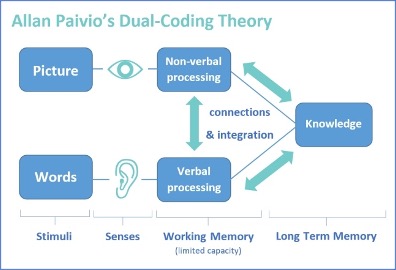
Taylor (2019) notes that the dual processing power of the brain is what makes this dual coding (Paivio, 1971) and it also reduces the load on working memory. In short, when we use dual coding, we help the information go in better (to long-term memory) and come out more easily (to use in working memory).
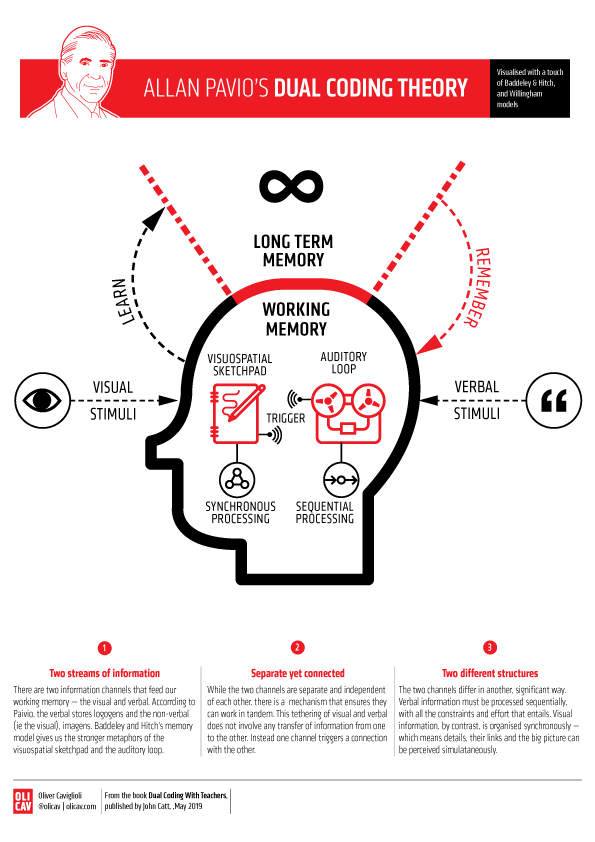
Dual Coding is something that I have regularly noticed in Modern Language classrooms – often new rods and vocabulary is taught within the written (see the word in French) poubelle and auditory (hear the word in French) spheres and this is supported by a picture of a wastepaper bin to help embed the image into the memory. This is making the most of all the learning channels (what Caviglioli calls the ‘visuospatial component’, even if the student forgets the spelling they still might remember the sound of the word. So this gives them a double chance of remembering something that is learnt. The theory behind Dual Coding notes that if a teacher shares visual and verbal explanations simultaneously, the students are more likely to process the knowledge and retain the knowledge more effectively.
This then, links in with our work on memory and how we can help to build up strong memories that we can continually come back to at a later date. Alan Baddeley developed the working memory model which supports the concept that ‘complementary audio and visual processing routes inside the brain [will] benefit detailed memories’. (Main, 2021)[3]
The danger with using Dual Coding is that we simplify things too much. Oliver Caviglioli notes on a poster he has produced about Dual Coding that, ‘it’s more than just pairing words and images for better recall. Its major benefit comes from diagrammatic explanations’.
Paul Kirschner says that,
“Combining words and images effectively facilitates learning; their impact is additive. According to Dual Coding Theory, if the same information is properly offered to you in two different ways – it enables you to access more working memory capacity. It also helps to boost the traces in your long term memory as two connected traces are stronger than one single trace.” (Paul Kirschner in Dual Coding by Oliver Caviglioli, 2019).
Weinstein and Sumeracki (2019) put things a bit more simply when they say that,
“Dual Coding is the process of combining verbal materials with visual materials. Pictures are often remembered better than words. Dual Coding Theory is the idea that when we combine text information and visual information, our learning is enhanced because we process verbal and visual information through separate channels.”
Nader and Hardt (2009) noted that creating effective learning is all about memory. If a memory is never encoded, then it was never created in the first place, so there is nothing to retrieve. As teachers, we need to be instrumental in creating the encoding of the memory (through some form of activity/task), this can then be further consolidated or processed. The application of the memory is NOT a one off event – it requires repetition – so as the memory is stored and repetitively retrieved – this need to be repeated for the memory to be embedded fully.
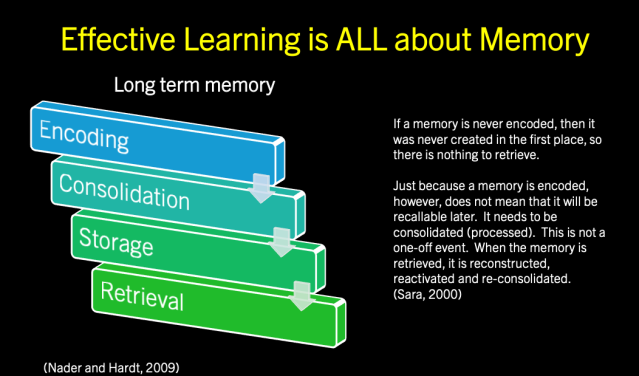
Dual Coding can be used in a lot of different ways in the classroom but the key ingredient is making sure that the two channels are being used simultaneously. Look at the example below – as teachers we often underestimate the massive amount of decoding that a pupil has to experience in order to answer a basic question. The level of knowledge required to identify a capital city on a map takes a sequence of thinking . . . and yet, we expect this thinking to happen automatically and within a microsecond. Teachers need to think about how the layers of knowledge have been built up to be able to answer this question quickly.
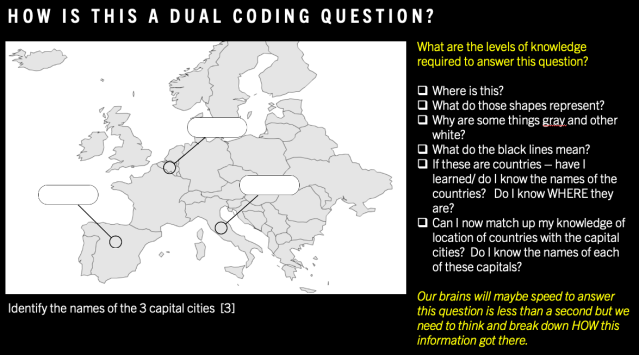
Using Dual Coding in the Classroom
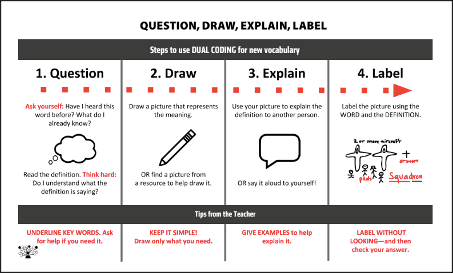
Source: https://www.tailoredpractice.com/single-post/putting-dual-coding-in-the-hands-of-students
The diagram above from Tricia Taylor sets out a simple way for teachers to use to help students to model. There are a variety of ways that teachers can go about something like this but here is one possible worked example from Geography (using some basic word definitions).
Part 1: Question
- Start by asking students about what they already know in relation to the words/ topic that is being studied.
Example – Key words from the Water Cycle
Words: Evaporation, Precipitation, Infiltration and Percolation
- Get students to read the definition of the words – do they understand what the definition is saying? Underline key words. Teacher explanation.
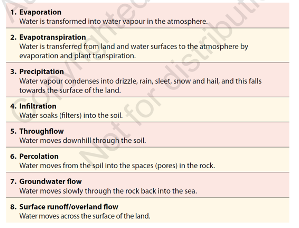
Source: Manson, T (2023) CCEA GCSE Geography Study Guide, Colourpoint Educational
Part 2: Draw
- Draw a picture that helps to represent the meaning of the words OR find a picture or resource to help draw it
- Remind students they should only draw what they need – no more!!
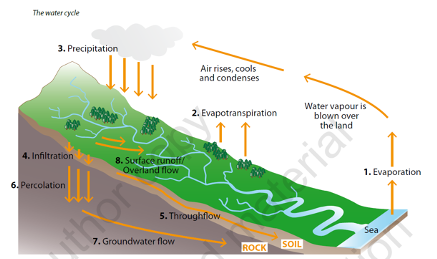
Source: Manson, T (2023) CCEA GCSE Geography Study Guide, Colourpoint Educational

Part 3: Explain
Students pair up and explain the main features of their diagram to a peer and give then give a concrete example of the definition. Teachers can also use this time to give examples of how the words might be used differently in different contexts. For example, Percolation might be used when describing how a coffee machine works.
Part 4: Label
Students label the pictures using the word and definition or maybe make into a flow diagram to help students to remember each individual definition but also their place in the wider ‘Water Cycle’.
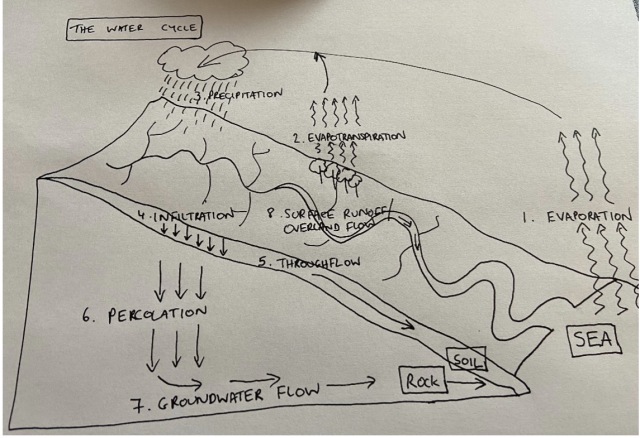
Part 5: Retrieval
Students can use retrieval practice by trying to reproduce the image or some of the definitions without looking at the answer.
Taylor (2019) also lists a few more good ideas that teachers can use to put dual coding into the hands of students so that they have more independence.
- Picture it: Create dual coding classwork and homework assignments. For example, have students come up with different ways to represent information from the lesson through simple drawings or graphic organisation.
- Recall it: Students recall visuals as a retrieval practice strategy. For example, ask students to recall the diagram used to explain a concept and recreate it without looking at the original.
- Quick Draw exit tickets: Ask students to quickly create an image that represents a key element they learned in the lesson – or several key elements. These can then be displayed to the rest of the class to provide examples or dispel misconceptions.
- Encourage students to visualise concepts and procedures that they have learned.
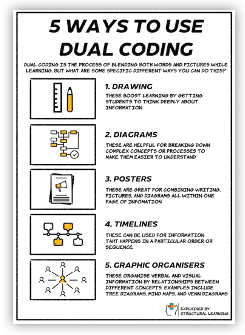
Source: https://www.structural-learning.com/post/dual-coding-a-teachers-guide
How can I be more deliberate about using Dual Coding in a lesson?
I have realised that actually I have been using Dual Coding in my lessons for years but how can I be more deliberate about how I use these techniques to help learning, memory and recall?
- Allow the students to come up with their own drawings rather than copying mine (unless it’s a really hard thing to draw). Think about whether what you are teaching is something you need to demonstrate or is it something they can try to draw for themselves.
- Build up in stages rather going straight from definitions to full blown complicated diagram
- Take more time – how often do we rush students to get the diagram done quickly . . .
- Get them to explain their drawings to peers at different stages . . . Describe what you have drawn? How does your diagram work? What are the most important points in your diagram?
- Practice Retrieval – in a week, in a year come back and ask them to repeat the drawing of the diagram from memory. Check their answers for mistakes and misconceptions. Correct any mistakes and get them to redraw with the right answer.
Examples of Dual Coding
Oliver Caviglioli in his book on ‘Dual Coding’ lists quite a number of ways that teachers can use to help students combine visuals with text. (Caviglioli, 2019)
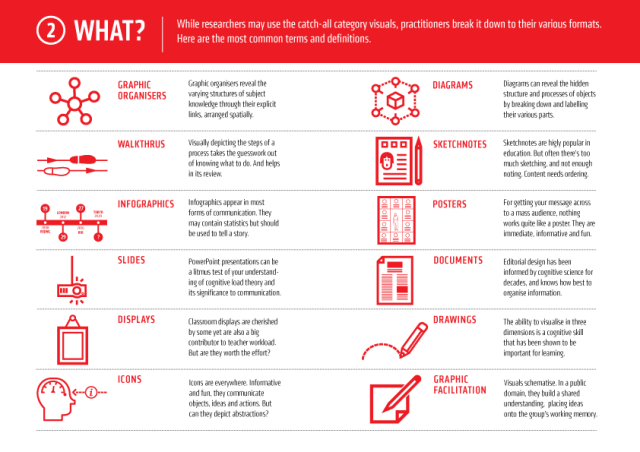
- Drawings
These are when students are asked to produce their own drawings of a picture or idea to help them to remember the key points of a course
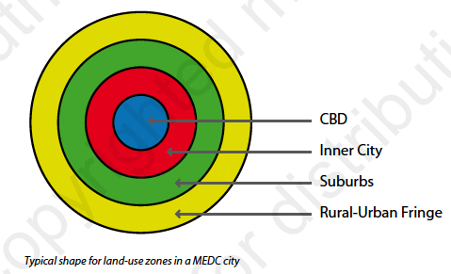
- Diagrams
What is the difference between a drawing and a diagram? Diagrams are more complicated, structured representations of things – usually found in a textbook that help to explain key concepts using flow charts or other representations.
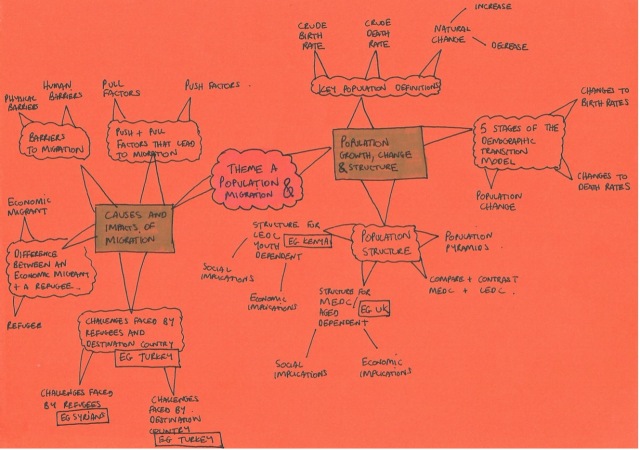
- Posters
A method of presenting information on a larger scale.
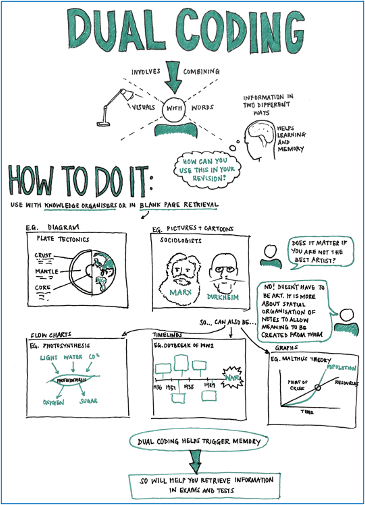
- Timelines
These are used to show a particular sequence over time or to show the order of something eg stages in a Science experiment or instructions on how to cook a particular recipe.
For example, in History if a student was reading the following passage in a textbook to try and learn the key facts about the wives of Henry VIII – they might find it difficult to understand without creating some form of graphic.
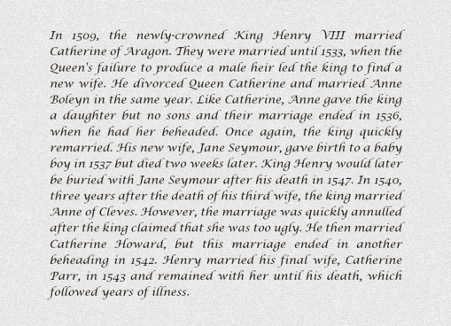
There are a lot of facts and trying to retain the dates in the right order can cause confusion. Therefore, we can organise this learning using a timeline.
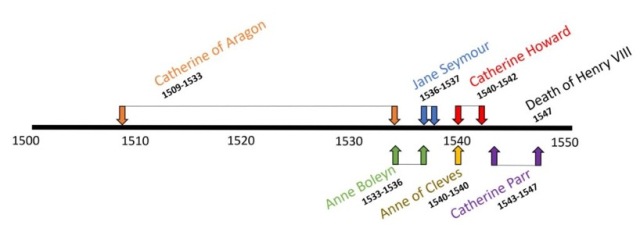
The timeline helps add a layer of context to the knowledge. Everything is now sequenced in the correct order and actually this provides a nice visual realisation that is not apparent from the text – eg Who was Henry married to the longest? Who was he married to the shortest? Who was Henry married to when he died? There is even space left for the student to add their own addition to the diagram – how did each marriage end . . . the student could come up with their own code for divorced, beheaded, died etc.
Example from Endoxa learning (https://endoxalearning.com/blog/teaching/dualcoding/)
- Graphic/ Knowledge Organisers
These help to organise and arrange a wide range of knowledge from one format into another. It is a common misconception that Graphic or Knowledge Organisers need to be complicated – they don’t! They just need to help simplify the topic that students are trying to think through an learn.
There are many different types of Graphic Organisers
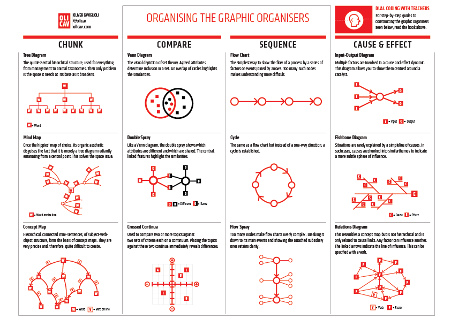
LearnSpark (in NI) have some fantastic Knowledge Organisers available that can be used by teachers or by students to help their revision.
Go to https://learnspark.co.uk/ and then click on ‘Study Skills Development’ and then select ‘View our range of recommended Study Tools’ or https://learnspark.co.uk/#Study-Skills-Development
Some of the resources that you can download here include:
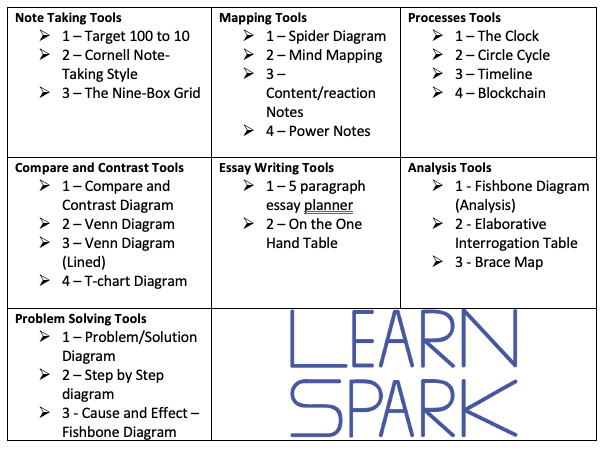
Why should we be using Knowledge Organisers?
Knowledge/Graphic organisers are built upon the assumption that students are able to build their received knowledge into a coherent and easy to understand structure. Whilst we recognise that students will only be able to keep a small amount of their learning in their working memory, we also are hoping the students will be able organise deeper knowledge in such a way that it is easy to retrieve quickly and in a logical format.
Caviglioli and Goodwin (2021) note that ‘without organisation, knowledge content is a mere list of discrete facts. But organising them through forging connections creates meaning.’ This is something that Frederick Reif[4] noted when he wrote, “Poorly organised knowledge cannot be readily remembered or used. But students don’t know how to organise their knowledge effectively”
Here is one example that Oliver Caviglioli uses to show how useful knowledge organisers can be in helping learners to scaffold their learning so that information is more accessible.
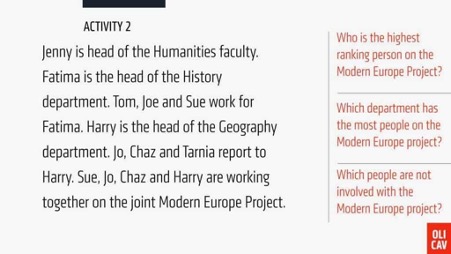
Caviglioli notes that when the same written information is produced in a chart format – that it becomes much easier to answer the questions.
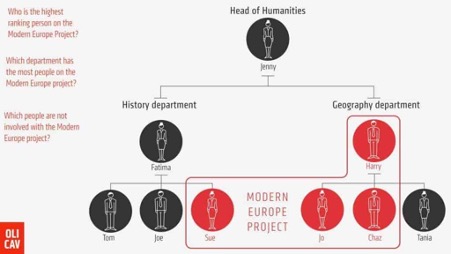
Examples of Dual Coding (many examples from Kate Jones at Lovetoteach)
- Notetaking in Notebooks
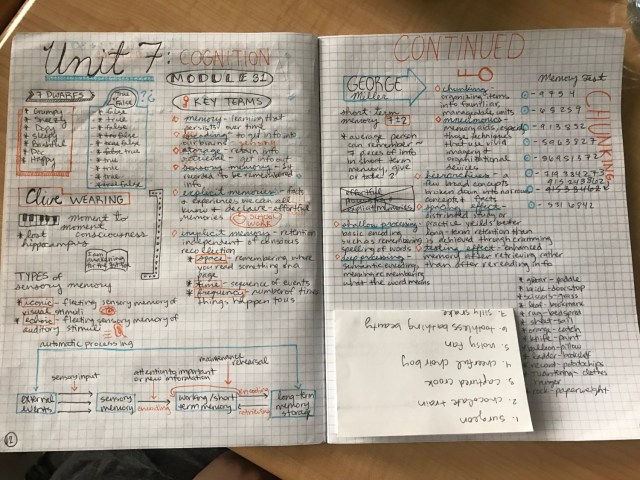
- Simulated Social Media
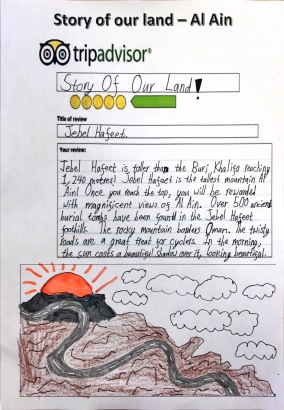
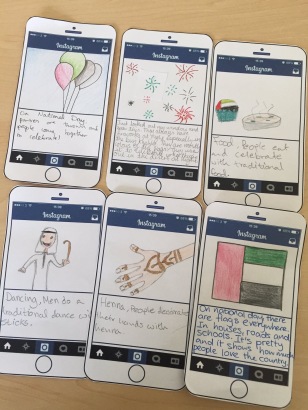
- Active Posters
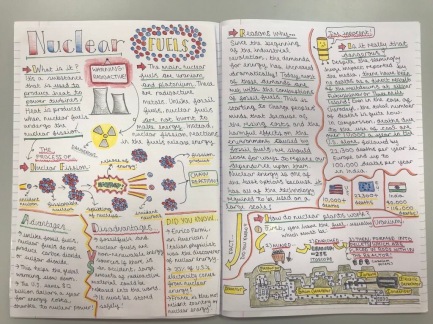
- Expanded Sequence
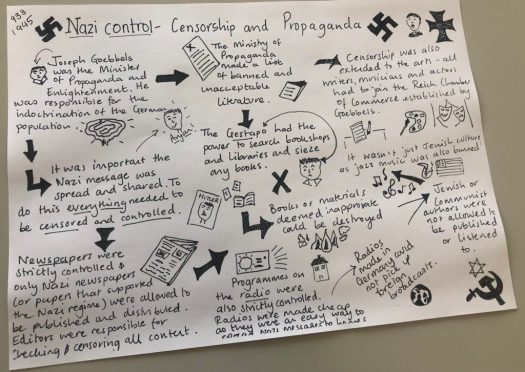
- Cartoon strips
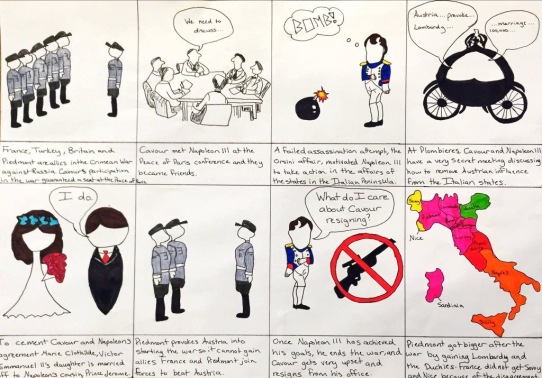
- Timelines
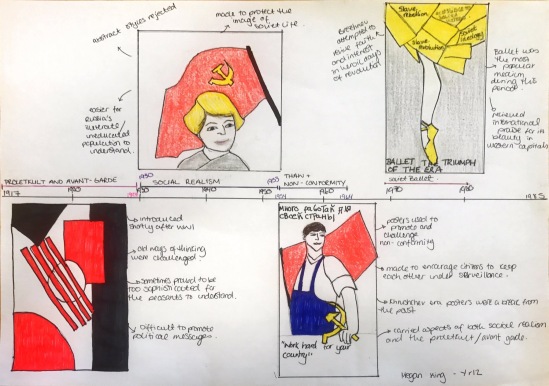
- Top Trump Information Cards
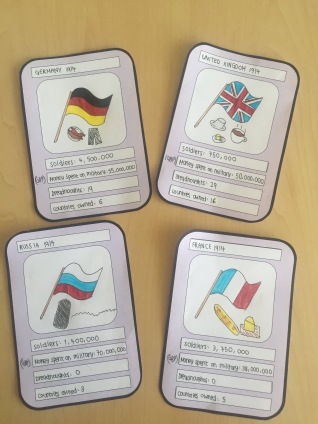
- Revision Clock
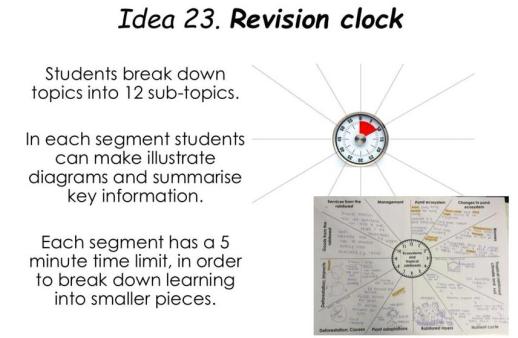
- Pennant Display
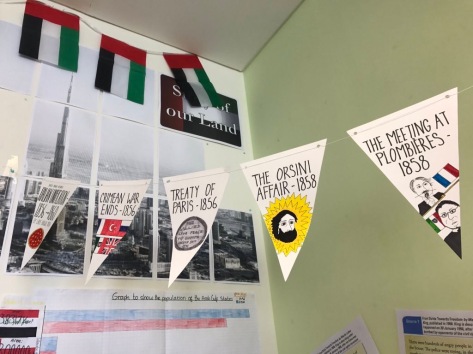
- Retrieval Organisers
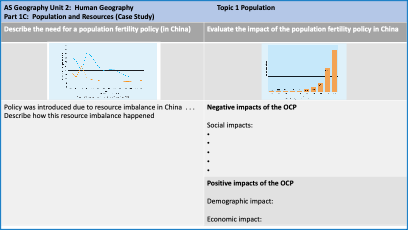
References and Further Information
Video about Dual Coding from the Learning Scientists – https://www.youtube.com/watch?v=6xCZ4XnkpCc&t=4s
Caviglioli, O and Goodwin, D (2021) Organise Ideas, John Catt
Caviglioli, O (2019) Dual Coding, John Catt
Endoxa learning (https://endoxalearning.com/blog/teaching/dualcoding/)
Learnspark (2023) Knowledge Organisers found here https://learnspark.co.uk/
Main, P (2021) Dual Coding: A Teacher’s Guide, https://www.structural-learning.com/post/dual-coding-a-teachers-guide#:~:text=What%20is%20Dual%20Coding%3F,is%20one%20of%20those%20strategies.
Manson, T (2023) CCEA GCSE Geography Study Guide, Colourpoint Educational
Reif, F (2008) Applying cognitive science to education MIT Press
Taylor, T (2019) Putting Dual Coding in the Hands of the students, Blog found at
https://www.tailoredpractice.com/single-post/putting-dual-coding-in-the-hands-of-students
Weinstein, Y and Sumeracki, M (2018) Understanding How We Learn: A Visual Guide, David Fulton
[1] The definition of a schema from Julie Stern (2019) in Education Week ( is “Schema is a mental structure to help us understand how things work. It has to do with how we organize knowledge. As we take in new information, we connect it to other things we know, believe, or have experienced. And those connections form a sort of structure in the brain.”
[2] Caviglioli, O and Goodwin, D (2021) Organise Ideas, John Catt
[3] Main, P (2021) Dual Coding: A Teacher’s Guide, https://www.structural-learning.com/post/dual-coding-a-teachers-guide#:~:text=What%20is%20Dual%20Coding%3F,is%20one%20of%20those%20strategies.
[4] Reif, F (2008) Applying cognitive science to education MIT Press
[5] Many of these examples of Dual Coding work are from the amazing Kate Jones and her blog site Love to Teach https://lovetoteach87.com

